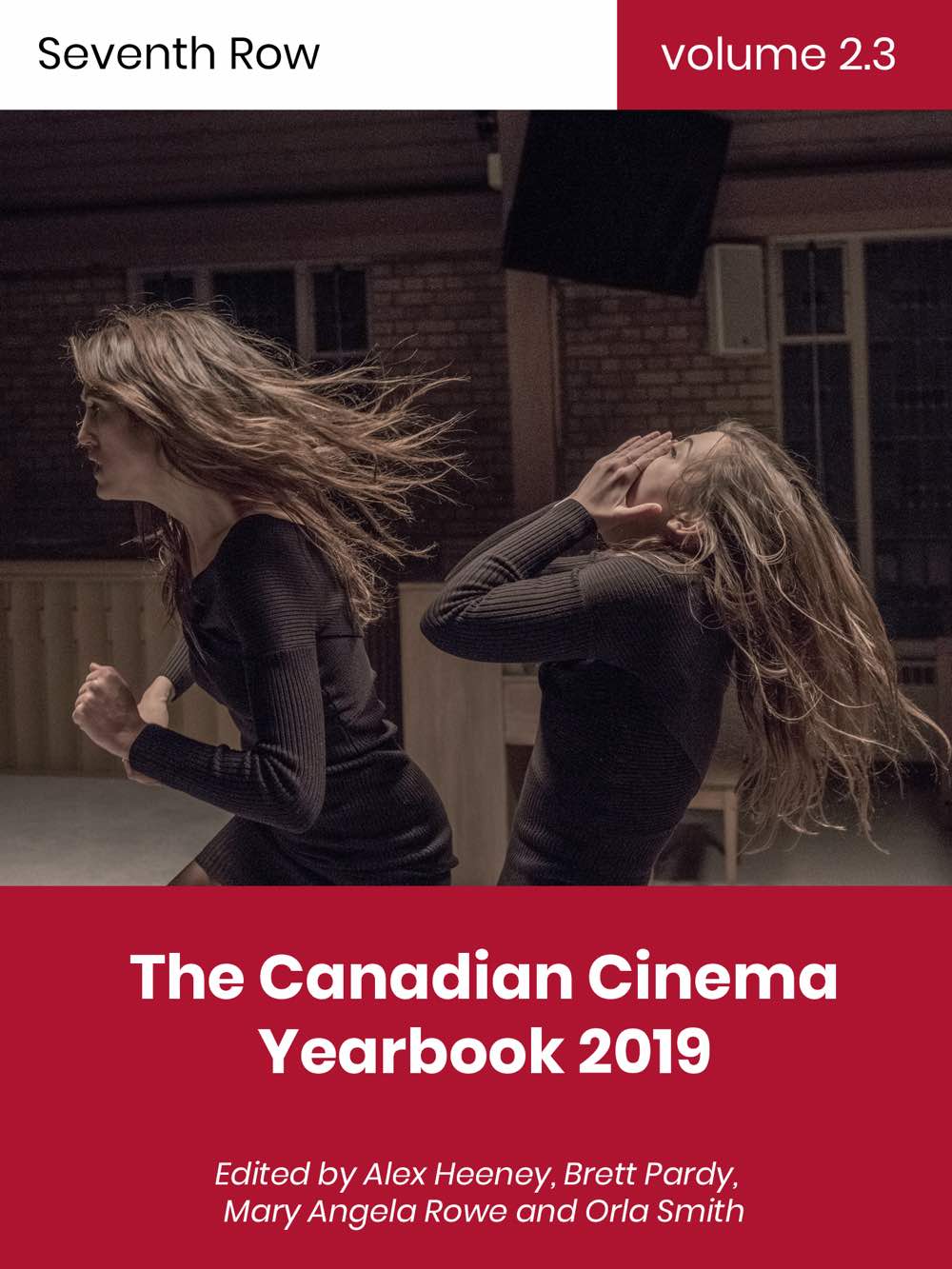The Splinters ensemble — Sofia Banzhaf, Callum Dunphy, and Shelley Thompson — discuss making the film, finding their characters, collaborating with each other and director Thom Fitzgerald, and what makes the story a uniquely Maritime one.
This is an excerpt from the ebook The Canadian Cinema Yearbook which is available for purchase here.
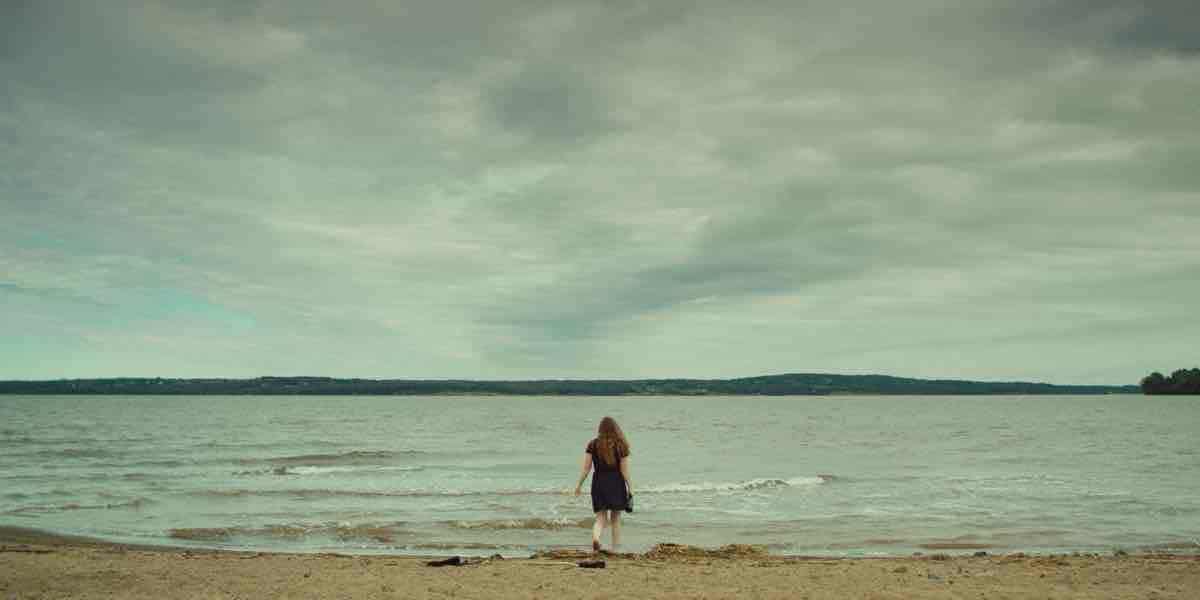
Splinters is the kind of LGBTQ film that could only be made in 2018. The big secret that Belle (Sofia Banzhaf) is afraid to reveal to her mother (Shelley Thompson), during her return home for her father’s funeral, is not that she’s a lesbian — that news came out when she was just a teenager, with no small amount of trauma — but that she actually has a serious boyfriend, Rob (Callum Dunphy). Neither of her parents were particularly accepting of her sexuality, convinced that her interest in women was something she’d grow out of. Belle doesn’t want her family to totally erase her queer identity now that it would be convenient for them to do so.
If this premise sounds gimmicky, that’s because it actually describes what Belle thinks her return home is about — grieving her father and keeping a secret. Thom Fitzgerald’s film, based on the play by Canadian Lee-Anne Poole, is fortunately much more complex. The tensions in Belle’s relationship with her mother are not only due to this disagreement around her sexuality, but also to Belle’s disappointment in her mother: this woman had chosen to live with a man she wasn’t exactly in love with, in a relationship where she was overly dependent on him. The independent-minded Belle cannot understand that. Now that he is dead, these old questions boil up to the surface again.
Featuring an excellent ensemble, Fitzgerald’s film, Splinters, is about the family dynamic between Belle, her brother, and her mother, and all of the unresolved issues they’re still dealing with. Set in rural Nova Scotia at the beginning of fall, and shot by great Canadian cinematographer Luc Montpellier, this intimate family drama is a visual feast that will have you ready to book the next flight to Halifax — and to call your mom.
Back at TIFF, where Splinters had its world premiere, I sat down with three of the film’s stars — Sofia Banzhaf, Callum Dunphy, and Shelley Thompson — to talk about the process of making the film, finding their characters, collaborating with each other and director Thom Fitzgerald, and what makes the story a uniquely Maritime one.
Pre-production and prep for the film Splinters
Seventh Row (7R): How did you get involved with the film?
Callum Dunphy (CD): I’m actually best friends with Thom [Fitzgerald, the director]. I’ve been working as a production assistant for him for a while. My first look at the script came when he said, “I need to make a movie. Here are two scripts. Which one is better?” I read both. Splinters was one of them, and it just immediately blew me away. “This one! You have to do this one!” I didn’t think I was ever actually going to be cast in it, though. When it came to audition time, I had to do a few of those. Second one was terrible.
Sofia Banzhaf: Mine was a bit more of a traditional process. I had known of Thom, but I didn’t know him personally. I auditioned; I sent in a tape, and then we got on a call. He’d seen me in a couple other things, but it was definitely pretty traditional. I read the script, and I loved it so much, I really wanted to do it right away. I became obsessed with it actually.
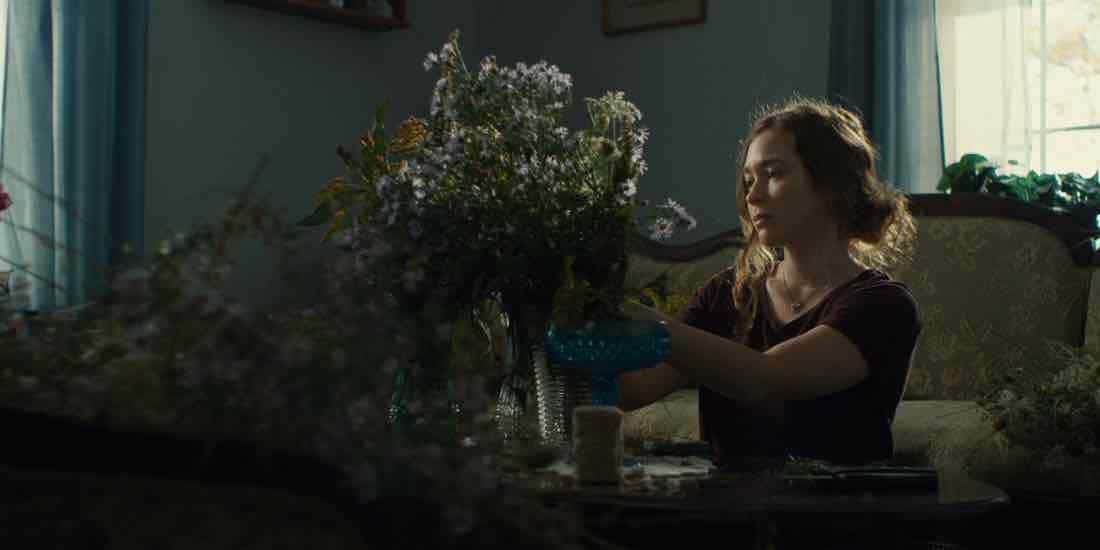
7R: Once you got on board, what was your process of preparing for the part?
Callum Dunphy: I think we had very different ones. I wasn’t allowed to prepare in any way. Thom thought I would over-prepare if I was given the chance, so he made me learn my lines every day when I got to set.
Sofia Banzhaf: He also didn’t want me to over-prepare. I was on a trip to Lebanon just before we shot and he was like, “Great, because I don’t want you to over-prepare.” And then I prepared, obviously, but I guess he wanted that from both of us. I knew all my lines, though. That would’ve been really hard if I had to show up to set and pull it out of my sleeve. I couldn’t do that.
We didn’t really have a lot of time or get a chance to hang out at all. The table read was a week into shooting. It’s an indie film, and the schedule was really tight. I think it ended up being 22 days for me, but 15 days of shooting together. It was tight, so there wasn’t a ton of time to get acquainted. A lot of things happened in the moment and on set.
I liked the way that Thom let us rehearse. Because it’s an ensemble piece, there’s a lot of moving parts and choreography. There was so much to figure out every day. We always carved out 45 minutes or so for us to just block it with camera. Often, you don’t have that luxury of rehearsing first, and then that determines where the camera goes. That’s not been my experience. Usually, it’s pretty set as to where and how we’re shooting, and you, as an actor, just have to fit into it. But this was way more intuitive. That’s a real blessing for an actor.
[click_to_tweet tweet=”‘We always carved out 45 minutes to block it with camera. Often, you don’t have that luxury of rehearsing first, and then *that* determines where the camera goes.’ – Sofia Banzhaf” quote=”‘We always carved out 45 minutes to block it with camera. Often, you don’t have that luxury of rehearsing first, and then *that* determines where the camera goes.’ – Sofia Banzhaf”]
Callum Dunphy: We got to create our own blocking and have them work around that. When we were doing that, we would come up with little things and talk to each other about how the scene should be going.
Sofia Banzhaf: Yeah, that time was invaluable. Thom would get us together and say, “Do the scene.” He would watch us as we would intuitively do it. Then, we would work out the kinks, as actors. He would step in, and then the camera would come, and we would look at it together.
7R: Did you get to talk through your characters with Thom beforehand, or did it really just start once you got to set?
Sofia Banzhaf: I did talk with him a lot, but I feel like he really trusted us so much. His casting was very intuitive. He didn’t overthink things, because I only taped [an audition] once, which was also unusual. I talked with him in between but not as extensively as I have in the past.
Callum Dunphy: Yeah, Thom’s conversations acting-wise tend to be him asking you a pointed question, and he doesn’t even care what your response is. He’s just like, “You don’t need to tell me. I just wanted to ask you that. Go for it.”
Sofia Banzhaf: He plants a seed.
Callum Dunphy: He really wants everyone to enjoy themselves on set. He wants it to be a good experience. He wants all the actors to feel they are able to express themselves.
Sofia Banzhaf: And then, every once in a while, you will hear from the monitor: “Try it again, but don’t suck this time.” That’s always a good one. Lights a fire.
7R: What were you able to do as prep, with this limited time? How did you figure out who your character was, how they move?
Sofia Banzhaf: I read the script a lot of times. The way that I usually work is, I try to find the parallels between the character and me, and then I try to find all the things that are different between us and build bridges to those things. I felt I actually had a lot of things in common with Belle, and I really understand that tense family dynamic. That was, for me, the biggest draw: the mother-daughter relationship is so complex and real, and I rarely see that. Lady Bird was one of those movies where I felt I finally saw a relatable relationship like that, where I really saw myself in her. I think this is similar. So I already felt very connected with the character. It wasn’t really a big jump for me.
[click_to_tweet tweet=”‘I try to find the parallels between the character and me, and then I try to find all the things that are different between us and build bridges to those things.’ – Sofia Banzhaf” quote=”‘I try to find the parallels between the character and me, and then I try to find all the things that are different between us and build bridges to those things.’ – Sofia Banzhaf”]
Callum Dunphy: For me, Thom told me before we started shooting that he wanted me to be myself most of the time and just not be too contrived about it. He prefers naturalism over anything else, at the end of the day.
To read the rest of the article, purchase a copy of The 2019 Canadian Cinema Yearbook here.
[wcm_restrict]
Creating the relationships between characters on set for the film Splinters
7R: Splinters is mostly about just a few characters who really get to know each other by the end of the film. How did you form those relationships with each other and with the other actors once you were on set?
Sofia Banzhaf: Because the writing is so good, it makes it much easier for us to find the relationships. So much of the film is between the lines and all of that stuff. You have to find it in the moment. There’s no way to prepare for it. You don’t know if it’s going to work. You don’t know what your chemistry is like with another person, no matter how much you prepare. We just got really lucky that everyone clicked into place really well. Bailey Maughan, who plays Greg — after the first week, we felt like siblings. We had almost instantly that brother-sister dynamic. That was just lucky.
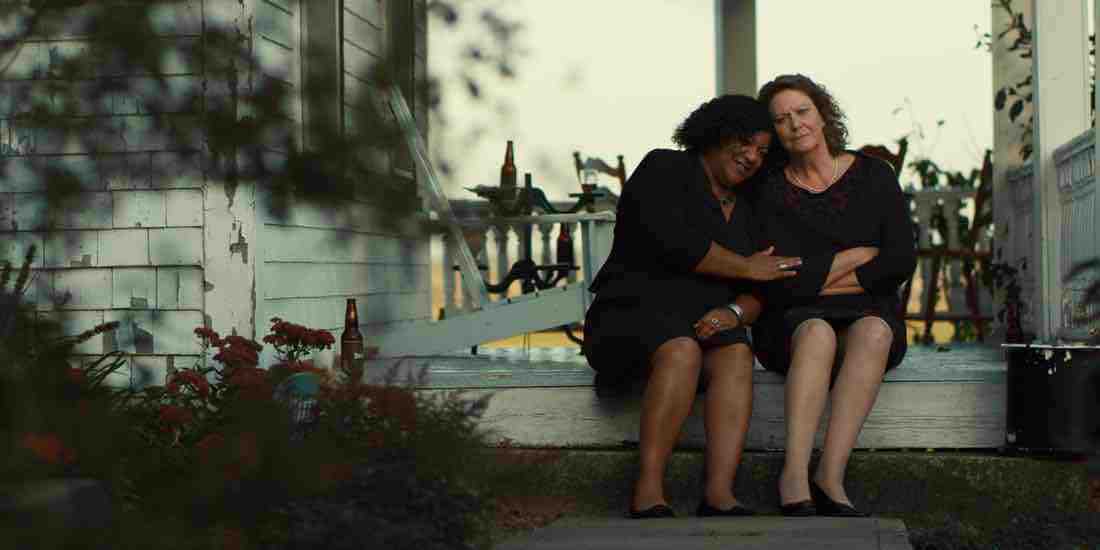
7R: Did you shoot a lot of coverage for Splinters?
Sofia Banzhaf: No, he didn’t want that.
Callum Dunphy: Thom really preferred to do as few close-ups as possible and just try to play with the movie with masters and wide shots. Watching it, I think he accomplished that.
Sofia Banzhaf: There’s a few oners that I’m excited about that we did shoot more coverage for, but he didn’t end up using. I’m really happy that that worked out.
7R: What was the experience of shooting with multiple actors in the frame, and without different angles?
Callum Dunphy: I always find it pretty easy to ignore the camera. Especially with this cast, most of the scenes were so easy to do in a lot of ways. They just felt so natural compared to other roles I’d done.
Sofia Banzhaf: I really like that way of shooting. I think I prefer it to getting tons of coverage. As to how it feels shooting it, of course there’s more ‘pressure,’ if you know it’s going to be a oner, and you do a take, and know that moment was better than the other one, but I know he can only have one of these. But watching it, it works.
7R: Did you have scenes that were particular favourites or were particularly difficult on the film Splinters?
Sofia Banzhaf: Shelley and I have a scene together that we both despised doing. It’s the scene in the attic, and we just had a hard time. The scene is amazing, but we had a really funny time figuring it out. It felt like there was a code that we needed to crack in that scene, but it took us a while to crack it. We shot it in one house, and then Thom decided the location didn’t look good, and then we ended up shooting it again on another day in a different house. I really love how it turned out. It certainly didn’t feel as good shooting it as it turned out.
Shelley Thompson (ST): I would agree. That was the hardest scene of the whole film from a technical point of view, but also because you are undressing, and putting clothes on, and taking clothes off, and you are super aware of the sound — which turned out to be an issue anyway, and we had to ADR it. So you are trying to balance all those things: our characters had both been drinking, and you’re trying to balance the relationship moving on a step by the end of the scene. It was a scene full of moving targets.
Sofia Banzhaf: But that ended up being one of my favourite scenes in the film.
7R: Can you talk about how you crafted that mother-daughter relationship, which evolves and changes a lot throughout the film Splinters?
Sofia Banzhaf: Most of what we did we found in the rehearsal before the camera came in. I think we had naturally really good chemistry, which is something you just learn when you arrive. That’s not a given, and it’s not something you can create out of nothing.
ST: I think we came looking for that openness from each other, and it was available. That was fortunate. Plus, off camera, we were able to laugh, and that’s always a big plus. We didn’t sit down and do the history together. We both probably have our own ways, and I know where I was coming from history-wise, so we were doing our homework on our own. I think we brought to it enough clarity that it informed how we played together.
Sofia Banzhaf: I would say that’s true. And Shelley’s such a generous actor that it was really easy.
ST: Well, likewise. The perfect daughter.
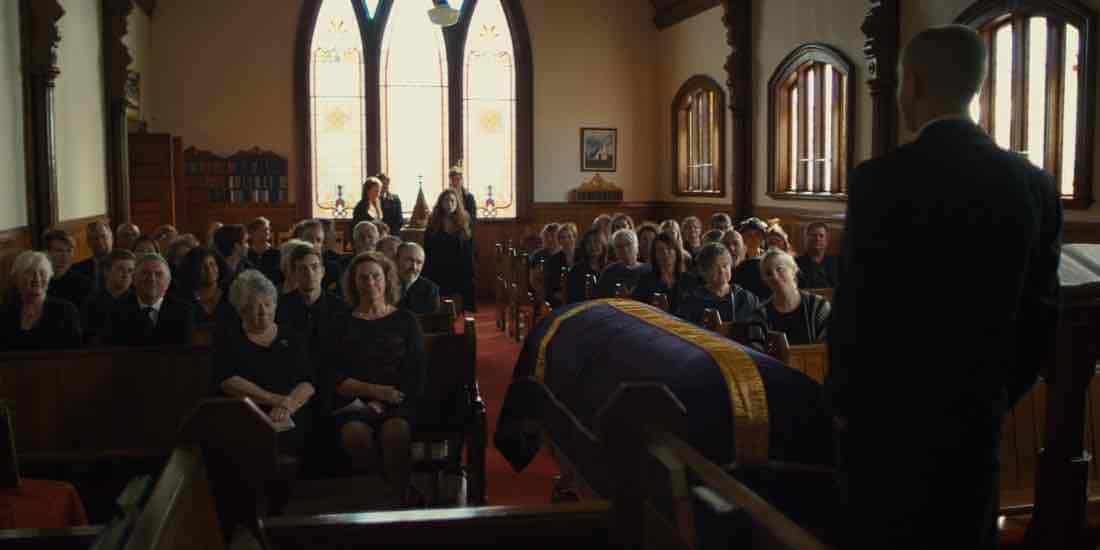
7R: How do you think Splinters finds real specificity for Maritime culture? What has been your experience with the film industry in the Maritimes?
Sofia Banzhaf: I’m based in Toronto, but I grew up in Newfoundland, so I have my Maritime roots, as well.
Callum Dunphy: Something that’s very accurate is people are drinking pretty much the entire movie, and that screams Nova Scotia to me. One of my favourite scenes to shoot, I was just standing there. I didn’t say anything the entire time. It was just watching Mary-Colin Chisholm deliver the funniest lines over and over again and just give these fantastic 10 out of 10 performances, take after take after take. I think I ended up ruining one of the best ones by looking at the camera because I burst out laughing so hard I couldn’t control myself.
Sofia Banzhaf: Yeah, that scene, where she’s down on her husband, that’s very impressive.
Callum Dunphy: Something I think the movie captures really well is Maritime humour in general.
[click_to_tweet tweet=”‘Something I think the movie captures really well is Maritime humour in general.’ – Callum Dunphy” quote=”‘Something I think the movie captures really well is Maritime humour in general.’ – Callum Dunphy”]
ST: I’m not from Nova Scotia. I was seduced by it, and moved there because of things that are shown so clearly in the film: that extraordinary landscape and the gentleness and space and the bigness and smallness of it. I know that sounds insane, but there’s a quality of this enormous emptiness and availability, but there’s also this smallness of scale because of the small communities that are clustered together. It’s a stunning place.
Nova Scotia has had its challenges for the film community since 2015 when the axe came down. We’re a resilient community, and the people who are still there, even the people who left, are people who are committed to the notion of a viable industry in Nova Scotia. Thom is a really good example of that. Thom is at the centre of the community in Nova Scotia, and he keeps making projects. He keeps moving forward, and he keeps committing to Nova Scotia actors, which a lot of Nova Scotia producers don’t do.
7R: What is your sense of how well the Maritimes get represented on film in Canada?
Sofia Banzhaf: I think the play that was written by Lee-Anne Poole, it’s just naturally steeped in Nova Scotia because that was where she grew up, and that’s her story. Like Callum said, the way to do a Maritime funeral is pretty specific. There’s a lot of singing, and lot of laughing, and I think that sets it apart from maybe a mainland depiction.
Callum Dunphy: I think the kitchen party says everything that we could, there. Some people will watch it and be like, “What? A kitchen party after a funeral? So strange.” But in the Maritimes, that’s so much the norm. Apart from anything else, I’ve never been to a funeral there where there wasn’t laughter, where there wasn’t a joke. I think that’s captured really well.
Splinters will be screening at film festivals across Canada this fall, including in Vancouver, Sudbury, Calgary, Edmonton, and Halifax. Some talent will be in attendance for Q&As.
You may also be interested in our articles about these other Canadian LGBTQ films
Splinters star Sofia Banzhaf actually appeared in the last Maritime LGBTQ film to screen at TIFF, Closet Monster, Stephen Dunn’s directorial debut, set in St. John’s. She played the best friend of the teenage boy protagonist who was just discovering his sexuality. We talked to Dunn about telling a queer coming-of-age story through a magic realist body horror lens. Heading slightly west to Quebec, we loved Philippe Lesage’s narrative feature debut, The Demons, a boldly shot queer coming-of-age story told from the perspective of its young protagonist. We talked to Lesage about crafting the film and its unconventional sound design.
[/wcm_restrict]
